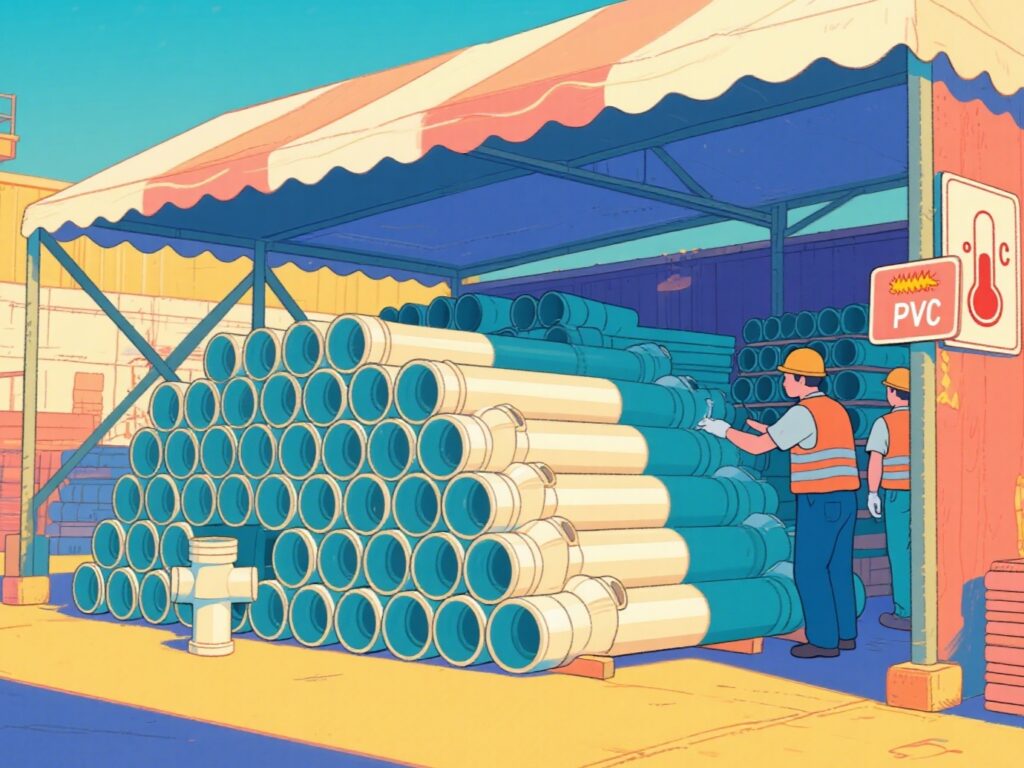Storage Precautions:
Avoid Direct Sunlight: PVC pipe fittings should be stored in a shaded and cool place, away from direct sunlight, as prolonged exposure to high temperatures can cause the material to soften, deform, or degrade.
Proper Ventilation: Ensure that the storage area is well-ventilated to avoid heat accumulation, which could lead to warping or damage to the fittings.
Stacking and Handling: Store PVC fittings in a manner that avoids excessive pressure or weight on the products. Stack them horizontally and avoid stacking too high to prevent deformation. Use protective covers to shield them from dirt, dust, and other contaminants.
Temperature Range: PVC materials should be stored at temperatures within the recommended range, typically between 5°C and 40°C, to maintain their physical properties and performance.
Construction Precautions:
Avoid Extreme Heat During Installation: It is advisable to avoid installing PVC pipe fittings during the peak of high temperatures (typically midday) as this can make the material more brittle or prone to deformation. Work during the cooler parts of the day, such as early morning or late afternoon.
Allow for Cooling Time: When transporting PVC fittings in hot weather, allow the materials to cool down before installation to prevent any thermal stress or damage.
Check for Material Softening: High temperatures can make PVC pipe fittings more flexible. Before installation, check that the fittings are not too soft or misshapen due to heat, as this can affect their performance and integrity.
Proper Cementing or Bonding: When using adhesives or cements to join PVC pipes and fittings, ensure that the adhesive is compatible with high temperatures. Apply the adhesive carefully, allowing it to set properly before subjecting the pipe system to pressure or stress.
By following these precautions, you can help ensure that PVC pipe fittings perform optimally even in high-temperature conditions.
